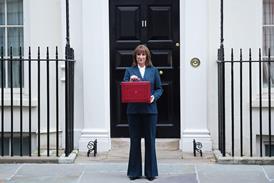The eagerly awaited economic bloc of the Association of Southeast Asian Nations (Asean) is expected to be in place by December. It envisages a single market and production base, with a free flow of goods, services, skilled labour and investment, prompting comparisons with the European Union.
The idea of closer economic cooperation was first mooted in 1997, three decades after Asean was created by Indonesia, Thailand, Malaysia, Singapore and the Philippines as a political bloc against the rise of communism in the region. Brunei followed in 1984, with Vietnam, Laos, Myanmar and Cambodia joining in the second half of the 1990s.
Taken as a single economy, the Asean Economic Community, or AEC, is the seventh-largest in the world. It has a young and increasingly urban population of 625 million; and a GDP of more than $2.4tn (bigger than India’s), which is expected to grow by an annual average of 5.6% between 2013 and 2018. This is well above the 1.76% projected for the EU or the expected 2.58% for the US, according to the Economist Intelligence Unit (EIU).
Lawyers in south-east Asia sense that economic integration will bring opportunities, but foresee limits too. For Asean comprises countries that are economically, politically and socially diverse, ranging from Singapore’s global financial centre and the economic powerhouse of Indonesia, to much poorer Laos and Cambodia, and communist-ruled Vietnam.
‘There is a huge economic disparity between the countries in the AEC, much more so than between the initial countries that started up the European Union,’ says DLA Piper’s Thailand managing partner Peter Shelford. He argues that comparing Laos or Myanmar with Singapore (one of the world’s richest countries in terms of GDP per capita) is like comparing ‘chalk and cheese’.
Clifford Chance partner Andrew Matthews says: ‘The AEC is going to be a very loose coalition that moves forward at a very slow pace. It has to be, because of the huge disparity in economic wealth and political complexion of the members.’ Despite progress since, the 2007 Asean Economic Community Blueprint, ‘simply established common goals’. Furthermore, the so-called ‘Asean Minus X’ mechanism allows members to opt out of economic schemes if they are not ready, Matthews stresses: ‘So, almost from the beginning, when it was establishing the goals, the AEC was giving every country the opportunity to opt out.’
Allen & Overy partner Simon Makinson says the AEC is a ‘two-speed convergence’ process, with the older and wealthier ‘Asean 6’ moving ahead of the newer and less affluent arrivals – Cambodia, Laos, Myanmar and Vietnam (CLMV). The six have reduced intra-regional import tariffs on almost all products to near zero, although the CLMV bloc is not far behind.
But non-tariff barriers remain – notably in the legal services market, where there are restrictions on foreign law firms and the free movement of lawyers engaged in cross-border trade and investment within Asean. These are likely to stay well beyond 2015.
‘The liberalisation of legal services is going to be one of the more difficult nuts to crack,’ says Makinson, who heads A&O’s Myanmar practice and is chairman of the firm’s Asean group. ‘Local bar associations in most countries in Asia are both protectionist and effective lobbyists.’
Foreign direct investment
A recent US Chamber of Commerce survey showed that, although US companies remain optimistic about business prospects in Asean, most respondents did not believe the bloc’s goals will be achieved until 2020 at the earliest.
Yet, according to a recent EIU survey of multinational business leaders, 97% of companies believe that AEC will happen, while 76% have an Asean-oriented strategy and increasingly manage the region as one integrated economic bloc.
Singapore is the favoured Asean hub, where 80% of firms locate their regional head office, while Indonesia and Myanmar were cited as locations for new factories over the next five years, followed by the Philippines and Vietnam.
Baker & McKenzie, the global firm which commissioned the EIU survey, has one of the largest Asean ‘footprints’, comprising more than 450 lawyers, including at least 120 partners. Asia-Pacific represents about 26% of the firm’s $2.5bn global revenue. ‘We expect the growth story in the Asia-Pacific region to continue and a lot of that will be driven by increased economic activity resulting from the economic integration of Asean,’ says Eugene Lim, who heads the firm’s tax and wealth management group in Singapore and the Asia-Pacific trade and commerce practice.
Greater economic integration will spur foreign direct investment by companies within Asean and outside. ‘Many businesses are looking at south-east Asia not only as an area to locate their production bases, but also as a market to sell their products and services,’ Lim says.
As the mindset of clients changes, so too does the thinking among lawyers. ‘As companies seek to come up with a strategy to approach Asean as a single market, we’ll see greater complexity in the types of legal services they require. The challenge for international law firms is to be able to present a regional offering in an integrated manner,’ Lim says. He points to the firm’s advice to Australia’s Ramsay Health Care Limited on its A$500m joint venture with Malaysia’s Sime Darby Barhard; the deal combined Ramsay’s three hospitals in Indonesia with Sime Darby’s portfolio of healthcare assets in Malaysia.
‘We’ve been aligning what we can deliver to clients [with] what they want – which is more pan-Asean coverage,’ A&O’s Makinson says. ‘What we have found over the last few years is that our clients are beginning to think in Asean terms. If you conceptualise Asean as one market of [over] 600 million with a growing middle class, you can afford to take bigger investment decisions than if you were investing in each individual country.’ A ‘significant number’ of A&O’s clients are setting up Asean regional offices, mostly in Singapore. The firm employs 123 lawyers, including 21 partners, across Indonesia, Myanmar, Singapore, Thailand and Vietnam.
DLA Piper is preparing for AEC by developing a ‘hub’ approach. Bangkok-based Shelford has been working with Singapore managing partner John Viverito ‘to develop a strategy for working much more closely around south-east Asia and in the AEC countries with hubs in Singapore and Thailand’, he says. The Anglo-American firm has a presence in Indonesia, Singapore and Thailand, and a ‘fly-in/fly-out operation’ in Myanmar.
As barriers to trade gradually come down, the firm hopes that this strategy will assist in serving clients investing in the impending common market. It will also enable DLA Piper to be more focused in the way it targets Asean jurisdictions where it does not have offices. ‘There isn’t enough work in Laos and Cambodia which would merit us opening an office,’ Shelford says. ‘So we have to look at alternative ways of handling work in those countries that do not involve having to set up an office or enter into any formal relationship with a local law firm.’ For example, the Bangkok office has Cambodia and Laos ‘desks’. A Philippines-qualified lawyer recently joined the firm in Singapore.
Among the areas of growth identified by law firms are:
- tax and trade, that is, assisting businesses, both within and outside Asean, on reorganising their supply chains and tax structures;
- cross-border M&A, driven by both Asean and external investors, notably from Korea, Japan, Europe and the US;
- capital markets; and
- infrastructure development and related project financing.
Asean infrastructure investment needs for 2010-2020 are estimated to be over $1tn, according to Asia Matters for America data. ‘It is clear that Asean countries cannot afford to do it on government balance sheets so there will need to be a considerable amount of private sector investment,’ says Makinson. He expects multilateral financial institutions such as Japanese-controlled Asian Development Bank and China-led Asian Infrastructure Investment Bank to be ‘very heavily involved’. ‘We feel there is a very big market out there for the type of project and banking finance work that we do across the world,’ he adds.
The 10 AEC countries have also been working towards capital markets integration, with the exchanges of Singapore, Malaysia and Thailand already linked through an electronic trading system. As part of progress towards a pan-Asean exchange, last August the country’s Stock Exchange Commission allowed foreign company initial public offerings in Thailand. Clifford Chance’s Matthews expects two such listings over the next two years. ‘That is absolutely what we are interested in, especially if there is an international tranche going out under Regulation S or Rule 144a,’ he says, referring to provisions in the 1993 US Securities Act on the offer or sale of securities by a non-US issuer.
For the last five years Clifford Chance has also been busy with increased activity among Thai conglomerates investing outside south-east Asia, including in the UK. For example, the magic circle firm acted for Thai Union Frozen Products on the €680m acquisition of MWBrands, the John West parent company.
Matthews expects ‘a lot more M&A cross-border between Asean states’, though he predicts that ‘the deal size will be relatively small’.
Singapore-based Vincent Dwyer, a Norton Rose Fulbright partner, reckons it is only a question of time before deal size bulks up: ‘There is still an aggregation play happening in many industries because there aren’t dominant players across the whole market. So there are, by definition, smaller acquisitions.’
To achieve free trade in services, the AEC goal is to allow foreign (Asean) equity participation of up to 70% in all services industries (excluding finance) by this December, though the target appears unlikely to be met by most Asean countries.
Makinson says that compared with mature markets such as the US, intra-Asean cross-border M&A deals will be significantly lower – typically below $500m. ‘It is not going to be a land of mega-deals, but it is going to be a land of more deals,’ he says.
Challenges
There are three key hurdles international law firms must jump in the new bloc: competition, local talent and protectionism.
Oversupply of lawyers in the island state of Singapore, the de facto legal capital of Asean, is one obstacle. Herbert Smith Freehills partner David Dawborn says: ‘There has been a huge number of foreign law firms moving into Singapore in the last 10 years. There are just too many lawyers there, but there is not enough volume [of work] to sustain all of those firms in the long run.’ Dawborn predicts some of the newer entrants may lose interest in the region.
This environment makes it all the more important ‘to keep relevant to the local market’, says Dwyer. ‘You just can’t fill a firm with expatriates from the UK or US. You have to have a strong local engagement in all offices.’ Norton Rose Fulbright, which has a presence in Singapore, Thailand and Indonesia through an association with local firm Susandarini & Partners, offers local law advice delivered by locally qualified lawyers in each country.
Local expertise matters but there is a real shortage of local talent. Shelford echoes the views of other international lawyers when he says: ‘Irrespective of the AEC coming into effect, clients nowadays are much more demanding and they expect an international standard of service.
‘In places like Myanmar, which is just opening up, it is very difficult to find local lawyers who have the education and training that foreign clients expect.’
DLA Piper is using its hubs in Bangkok and Singapore as a base for training locally qualified lawyers and to project-manage work undertaken by local firms to ensure they meet clients’ standards.
Foreign law firms do not just face competition from their international peers but also from rapidly expanding pan-Asean firms, such as Malaysia’s Zicolaw and Singapore’s Rajah & Tann, which started its regional expansion in 2010. ‘Our regional strategy has been very focused,’ partner Andrew Ong says. ‘We don’t pretend to be who we are not. Our strength – our comparative advantage – is in south-east Asia.’
With more than 500 fee-earners, Rajah & Tann is a network of law firms with offices in eight of 10 Asean countries, as well as China, and dedicated country desks for Japan and south Asia.
‘Rajah & Tann’s drive to be a regional legal powerhouse is not because of the AEC, but because we believe in the Asian growth story,’ says Ong. ‘This growth will continue, no doubt aided by the AEC, but notwithstanding how successful the AEC proves itself to be.’
Liberalisation
Protectionist regulation of the legal sector in a number of Asean countries is a major obstacle for many international firms in the region. Law Society international policy advisor Gerwin de Boer says that, although the AEC will be a contributing factor to liberalisation, it will be ‘no game-changer in the immediate future’.
The AEC Blueprint provides for the removal of ‘substantially all restrictions on trade in services’ in all sectors except financial services by 2015. The 1995 Asean Framework Agreement on Services forms the basis for achieving the free flow of services ‘by expanding the depth and scope of liberalisation beyond… the General Agreement on Trade in Services of the World Trade Organisation’, among other objectives. In retrospect, this has proved to be an ambitious timetable. The reality appears better reflected by a joint statement of Asean law ministers issued in November 2011, in which the opening of trade in Asean legal services was characterised as a work in progress.
Furthermore, the free movement of professionals has been limited to just a few professions. Agreements have been finalised that mutually recognise professional qualifications, including in accountancy, architecture, engineering and medical services, but lawyers have been excluded.
One international lawyer who prefers to remain anonymous describes the situation thus: ‘Four out of the five most protectionist countries in the world, when it comes to the legal market, are in [Asia].’ Topping the list is India, followed by Asean countries the Philippines, Malaysia, Indonesia and Singapore – in that order. He says: ‘The Philippines has always been vigorous at keeping foreign lawyers out. In Malaysia the door is half open but not very inviting. Indonesia has left a loophole that allows associated firms but not full integration. Singapore has a history of micromanaging the legal profession to protect their lawyers and so we’ve been drip-fed.’
The Philippines effectively bans foreign lawyers from practising in the country by limiting the practice of law to its own citizens. In Indonesia foreign lawyers can only practise in association with local firms. In Singapore, the liberalisation process started as far back as 1981, but only 10 foreign law firms have so far been licensed to practise Singapore law.
Malaysia partially opened its legal services market to foreign firms last June by allowing qualified foreign law firms (QFLF) and international partnerships, but the conditions attached to these licences are deemed by firms to be too onerous. Only one, the UK’s Trowers & Hamlins, has so far applied and received a QFLF licence.
Most international firms are making do by serving Malaysia out of Singapore. The two former British colonies are geographically close and their legal systems are based on English common law. Recent proposals to ban the practice met stern opposition, including from Malaysian businesses and The Law Society of England and Wales. Foreign lawyers advising on non-Malaysian law are now permitted to fly in and out of Malaysia for up to 60 days a year.
Foreign lawyers are not holding their breath over the integration of legal services across Asean. ‘It is going to be a long slow burn, both for reasons of domestic protection of the profession and because of the difference between the underlying legal regimes,’ says Nick White, head of Trowers & Hamlins’ office in Kuala Lumpur. In addition to English common law, Asean is a hodgepodge of legal systems that are based on civil, Islamic and socialist law, depending on the countries’ colonial history, cultures and political traditions. Vietnam’s legal system, for example, is based on socialist legal theory and French civil law.
There is certainly no doubt that firms would like to be able to open their own offices in more Asean jurisdictions. Herbert Smith Freehills currently has offices in Thailand and Singapore, an association with Indonesia’s Hiswara Bunjamin & Tandjung, and a secondment arrangement with a firm in Myanmar. Dawborn says: ‘Foreign lawyers are a positive influence on economic development. We are not trying to compete with what the local lawyers do. We facilitate foreign investment and cross-border transactions, which is our skill. What we do is complementary.’
One Singapore-based lawyer conceded that protectionism is hindering the expansion of foreign law firms in Asean. He says: ‘It would be a lot easier if we could just employ who we wanted to employ and place them where we wanted to place them, so it adds to the regulatory complexity.’ For example, in Indonesia foreign lawyers are allowed to practise in local firms in a ratio of 1:4, up to a maximum of five foreign lawyers. ‘If you want to put more expatriates in there, to help train and lift the quality of the local lawyers, they are very very restrictive,’ he adds.
Foreign law firms are also inhibited in Singapore, where litigation, conveyancing and family law remain the domain of domestic law firms.
Despite the barriers, there are ways to make a success of law in Asean. Lim says: ‘The rules for legal services in south-east Asia and indeed globally are very complex, but if you are able to navigate local requirements, you can have a presence in these markets. We have structured ourselves in a way that gives us presence in seven out of 10 Asean countries.’
In the Philippines, Indonesia and Malaysia, Baker & McKenzie operates through what it calls ‘member firms’. ‘I think it will be a while before we see a single open market for legal services on a pan-Asean scale,’ Rajah & Tann’s Ong says. ‘This, however, does not mean that lawyers cannot deepen their level of cooperation to provide clients with a service offering that overcomes these hurdles as much as possible.’ Under the banner of Rajah & Tann Asia, following a rebranding in August 2014, Rajah & Tann now leads an eight-firm independent regional network. This includes Malaysia’s Christopher & Lee Ong, Indonesia’s Assegaf Hamzah & Partners, Cambodia’s R&T Sok & Heng and Myanmar’s Rajah & Tann NK Legal.
Asean factfile
Nations
Brunei
Cambodia
Indonesia
Laos
Malaysia
Myanmar (Burma)
Philippines
Singapore
Thailand
Vietnam
Combined GDP (2013): $2.4tn
Population: 625 million
Infrastructure investment needs
(2010-2020): $1.1tn
Source: The Association of Southeast Asian Nations
The AEC has the potential to be a serious regional player in the global economy and so a magnet for foreign lawyers. And even if comparisons with the EU may be fanciful, as Shelford says: ‘It’s taken a very long time for the EU to develop to where it is today. You can’t expect the AEC to bring overnight changes.’
One key piece of legislation for the free movement of lawyers within the EU, the Lawyers’ Establishment Directive, was introduced in 1998, nearly four decades after the founding of the European Economic Community. It entitles EU or European Economic Area lawyers to practise home, international and host state law on a permanent basis under their home title anywhere in the EU, EEA or Switzerland. ‘I don’t think people should expect a “big bang” at the end of the year. It is just the start of a journey of gradual reform,’ Dwyer says. ‘Just like the EU, it is going to take 30 to 40 years for the AEC to put important building blocks into place,’ he adds, pointing out that only this year the EU began the process of integrating its energy markets.
But lawyers do not need to be looking at that timescale. ‘If the barriers do come down and if the region’s very diverse politics allow for it all to happen, the sky is the limit,’ Shelford says. ‘South-east Asia is going to be a fascinating place to be in for the next few years.’
Marialuisa Taddia is a freelance journalist
































No comments yet